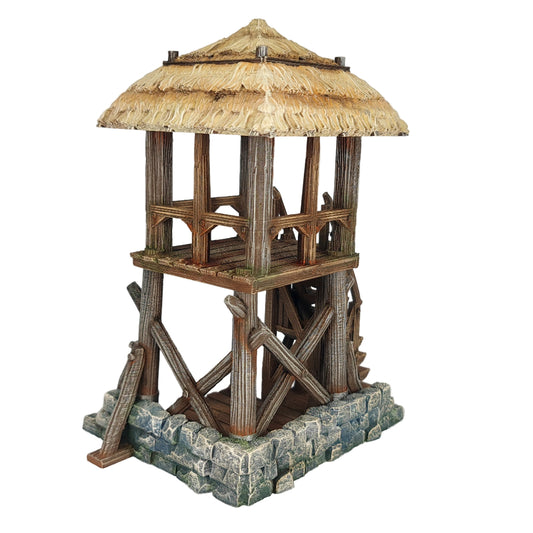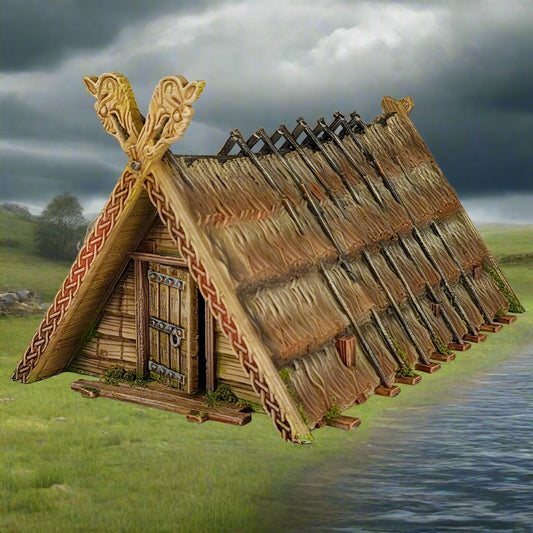Collection: Golden Age of the Vikings
-
1x Wooden Pier Walkway - Plank
Regular price £1.49 GBPRegular priceUnit price / per -
Drakkar – Viking Long Ship - 28–32mm Wargaming Terrain
Regular price £24.99 GBPRegular priceUnit price / per -
Karvi – Viking Ship - 28-32mm Wargaming Terrains
Regular price £13.99 GBPRegular priceUnit price / per -
Knarr - Merchant Viking Ship
Regular price £21.99 GBPRegular priceUnit price / per£23.99 GBPSale price £21.99 GBPSale -
Medieval Viking Watch Tower – 28-32mm Wargaming Terrain
Regular price £23.99 GBPRegular priceUnit price / per -
Modular Viking Palisade
Regular price From £7.49 GBPRegular priceUnit price / per -
Modular Viking Palisade - Gate Only
Regular price £8.99 GBPRegular priceUnit price / per -
Odin Statue – Viking Norse God Monument - Wargaming Terrain
Regular price £4.99 GBPRegular priceUnit price / per -
Snekkja - Viking Long Ship - 28–32mm Wargaming Terrain
Regular price £18.99 GBPRegular priceUnit price / per -
Stone Wall Set
Regular price £19.99 GBPRegular priceUnit price / per -
Viking Hall
Regular price £27.99 GBPRegular priceUnit price / per -
Viking Lychgate
Regular price £14.99 GBPRegular priceUnit price / per -
Viking Medieval Ruined House – Terrain Scenery
Regular price £16.99 GBPRegular priceUnit price / per -
Viking Shield Maidens - Set of 6
Regular price £24.99 GBPRegular priceUnit price / per -
Viking Ship Construction Site – 28-32mm Tabletop Terrain
Regular price £15.99 GBPRegular priceUnit price / per -
Viking Village House 1
Regular price £26.99 GBPRegular priceUnit price / per -
Viking Village House 2
Regular price £26.99 GBPRegular priceUnit price / per -
Viking Village House 3
Regular price £31.99 GBPRegular priceUnit price / per -
Viking Village House 4
Regular price £23.99 GBPRegular priceUnit price / per -
Viking Village House6
Regular price £26.99 GBPRegular priceUnit price / per -
Viking Warriors - Set of 5
Regular price £19.99 GBPRegular priceUnit price / per -
Viking Well
Regular price £12.99 GBPRegular priceUnit price / per -
Wooden Framed Ground Mine – 28–32mm Wargaming Terrain
Regular price £9.99 GBPRegular priceUnit price / per -
Wooden Pier Jetties Walkway for Strolling
Regular price From £6.99 GBPRegular priceUnit price / per
The "Golden Age of the Vikings" refers to the period in Scandinavian history when Vikings were most active on the international stage, both in trade and in conquests and settlement. This era, lasting from around the late 8th century to the mid-11th century, is also known as the Viking Age. Here are some key features of this period:
Expansion and Conquests: Vikings were known for their raids and military expeditions. They conquered and settled many areas of Europe, including parts of England, Ireland, France, and even reached the shores of North America.
Trade and Exploration: Vikings were excellent sailors and explorers. They traded extensively, reaching Byzantium, the Middle East, and even Central Asia. Their trade routes were vast, covering most of Europe.
Settlement: Vikings established settlements and colonies in various parts of the world. The most notable include settlements in England (Danelaw), Ireland, Iceland, Greenland, and even attempts to colonize North America (Vinland).
Culture and Society: This period was characterized by a flourishing culture, with unique traditions, mythology (Norse mythology), art, and a complex social system. Vikings had advanced shipbuilding techniques that enabled their long-distance travels.
Religion and Changes: While initially pagans, the Vikings’ contact with Christian Europe led to the gradual Christianization of Scandinavia, significantly impacting the region's culture and politics.
The Golden Age of the Vikings came to an end with the increasing strength of European states that began to defend themselves more effectively against raids, as well as the integration of Vikings into Christian Europe, which changed their traditional way of life.













































